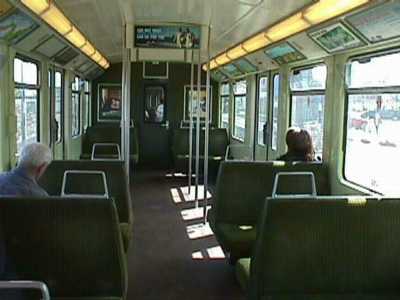This website has been archived from TrainWeb.org/crocon to TrainWeb.US/crocon.
This website has been archived from TrainWeb.org/crocon to TrainWeb.US/crocon.
NORTHBOUND ABOARD THE DUBLIN DART
by Craig S. O'Connell
My travels on this Irish oddessey began when Aer Lingus Fight 111 landed at Shannon International Airport at 7:00 a.m. on July 20, 2000. This visit to the ould country was to last two weeks and take us from the west coast at Shannon north to Galway, Sligo, Donegal and Leitrim and then on to Dublin. My wife and teenage daughter accompanied me on the trip.
Of course it's 2:00 a.m. body clock time and you're renting a gear shift class C car from Dan Dooley's at the airport and finding yourself hugging the left side of the road attempting to stay with the traffic flow. Having made the journey just a year before I quickly adapted to the peculiar driving habits derived from centuries of English colonialism.
Our
first stop was at the Cliffs of Mohr, breathtaking in
stature. The rocky coastline is accentuated by a swath of 5
miles of earthen deposits rising over 700 feet high. The
Cliffs are the home for numerous seabirds including puffins.
The
visitor's centre provided a well needed freshly brewed cup
of Bewley's coffee and scrumptious Irish scones.
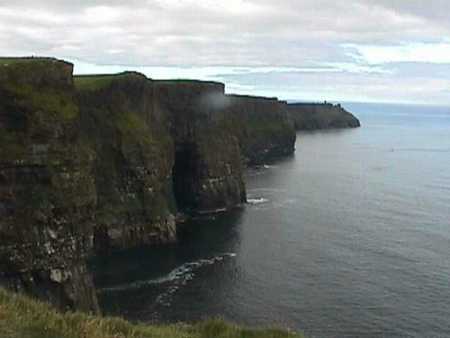
|
|
Now refreshed we set off to the Burren, a 116 square mile moonscape of limestone rock with an astonishing variety of colorful wildflowers reaching up through the stone crevices. |
Heading north we quickly toured the towns of Lisdoonvarna, Doolin and Kinvara on our way to Galway. But no drive along this northern route would be complete without a stop at the Yeats tower and home in Thoor Ballylee. Here we became enraptured by the poetic magic of this country summer retreat of one of Ireland's most noted bards, William Butler Yeats.
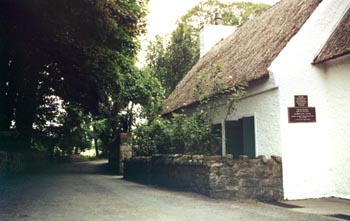 |
|
The journey northerly, now enriched by the contentious spirit of Yeats, was inspired as we approached Galway, Europe's fastest growing city.
|
Galway is every bit as chic as Dublin but with the undeniable Gaelic character of the west. Sidewalk cafes abound serving up bittersweet lattes and continental cuisine. Come midnight this city on the bay resounds with a rhythm and pulse as timeless as the people itself.
|
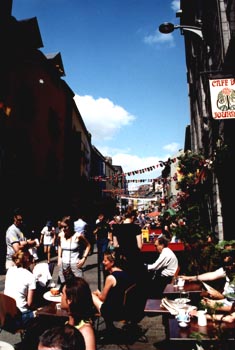 |
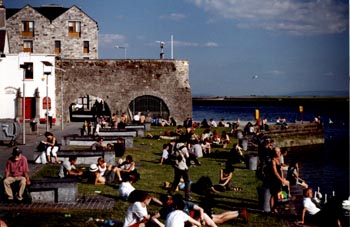
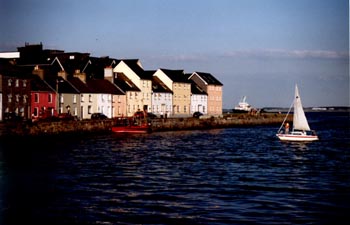
From Galway we took the motorway northbound through counties Mayo, Sligo and Leitrim. We based our northern travels out of this idyllic location pictured below.
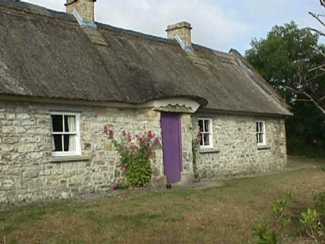
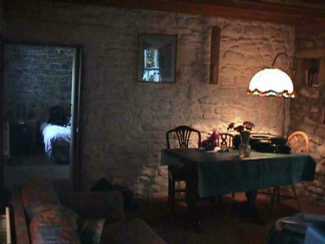
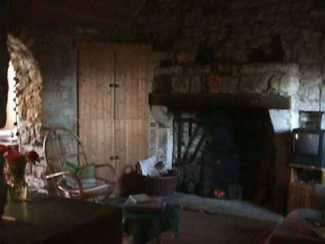
From here we explored the pastoral beauty of Ireland's northwestern counties: Donegal, Leitrim, Cavan and Sligo. Both Cavan and Donegal lie within the province of Ulster but are part of the Republic of Ireland, having been partitioned out of Northern Ireland when it was determined that the largely Catholic population might swing the northern vote toward unity with the Republic.
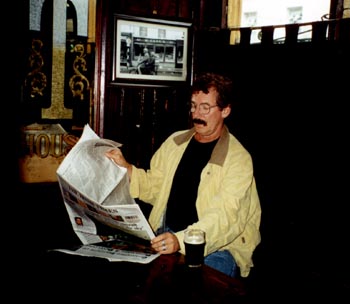 |
In Sligo I stopped for a creamy Guinness brew at Hardogan's on O'Connell Street. The town's most historic pub retains the old world charm replete with snugs (cubicles), stained glass, darken wood throughout and a cozy intimate interior. It was here that I met a fellow traveler, he from Britain on business in the Republic, who, sitting beside me at the bar, engaged me in conversation. |
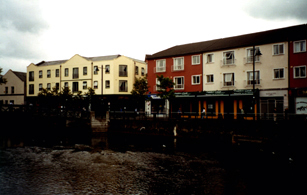 |
This is Sligo viewed from across the Garavogue River that bisects this northwestern city. Excellent selections of fine tweeds and woolens can be found on O'Connell Street and among the many busy side streets in city centre. |
One doesn't often think of sunny beaches when one thinks of Ireland. But perhaps one of the most spectacular attractions of the west was the long sandy beaches that extend along the jagged coast. This is Fintra Strand along the northwest coast of County Donegal. It is spectacular both for it's natural beauty and placid waters that lap the sheltered coves. |
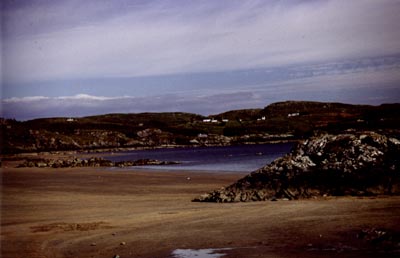 |
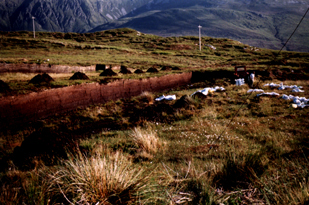 |
The high tech industry has been largely responsible for Ireland's booming economy, known euphemistically as the "Celtic Tiger." But here, in the northwest, the turf industry still prevails. This is where you can still find touches of the old Ireland, idyllic in its untouched pastoral beauty. Here the turf is cut and harvested in peat bogs, albeit with machines, and shipped to markets throughout the Republic. Ahh...for the pungent smell of a warm turf fire! |
Ultimately our western sojourn came to an end as we set out by motorcar along the carriageways to Dublin. It is my view that one doesn't really see Ireland without at least a two or three day stop in the capital city. Dublin is an Ireland all its own.
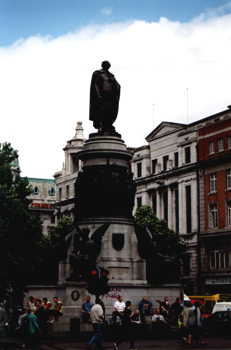 |
All of Dublin, the tourist guides will tell you, is divided into two parts--that north of the River Liffey and that to her south. O'Connell Street crosses the Liffey but much lies principally to the north. Here, at the foot of O'Connell Street, named, like many other main streets in the Republic, is the statue of one of Ireland's most famous freedom fighters, Daniel O'Connell, also known as "The Great Liberator." O'Connell stands just a few hundred yards from the scene of the 1916 Easter Rising at the G.P.O. and overlooks the river, "Anna Liffey," an anthromorphic figure of Joycean literature. |
I participated in the daily Literary Pub Tour,
where Trinity College students and drama school
thespians, take you on a pub to pub walking tour of the
area, pointing out the various locations where Joyce's
Bloom might have frequented, where the IRA leader Michael
Collins would hatch his plans, and where Samuel Beckett
would stop for his pint. Indeed a selection from "Waiting
For Godot" was acted out for us at one establishment. At
the end of the tour, following an enjoyable evening where
one has imbibed Ireland's notable thirst quenching black
porters, a pub quiz is given and the winner is awarded a
brightly colored T-shirt courtesy of the Jamieson
distillery. I am proud to say that I retained enough of
what I learned that evening to qualify as the first place
winner. And if you're one for stage drama, as I am, be sure to
check out a play at the historic Gaeity Theatre.
The south side of the Liffey, across O'Connell
Bridge, will take you to the bustling pedestrian mall
known as Grafton Street. Here's where you stroll
the busy streets lined with trendy shops, stop for a late
afternoon latte at Bewley's Oriental Cafe (it's
completely Irish) or enjoy a quick pint at one of the
many fine pubs of distinction.
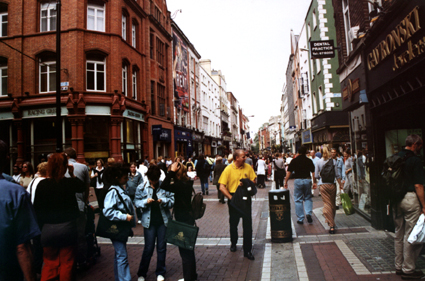
On my trip to Dublin in 1999 I rode the DART (Dublin Area Rapid Transit) trains to the southern most suburbs on the line. So this year I was to journey north on the DART as far as Howth.
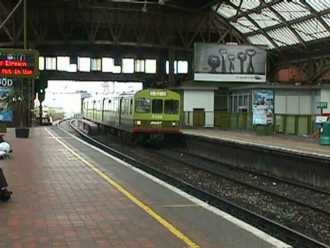 |
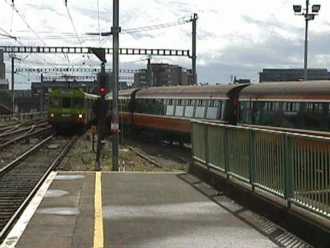 |
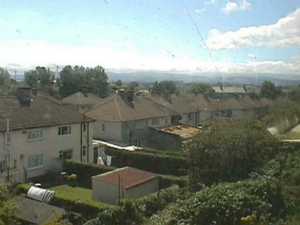 |
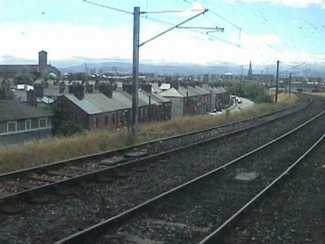 |
Here are views from the train overlooking the outskirts of Dublin. Note the overhead catenary in the picture at right.
